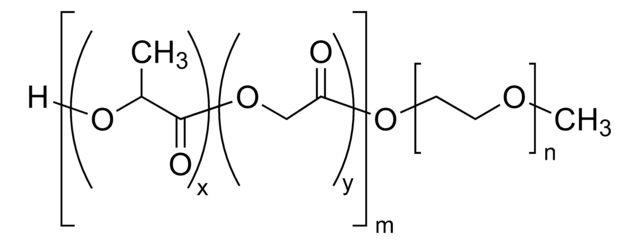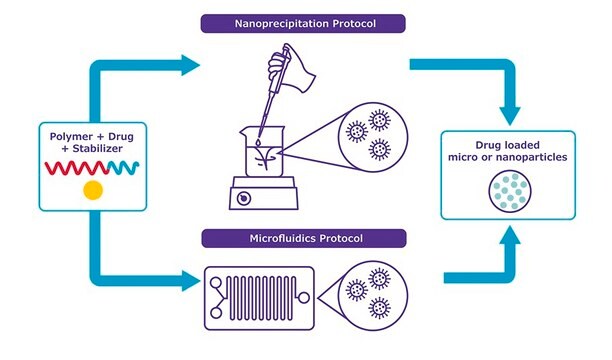911429
Poly(ethylene glycol) methyl ether-block-poly(lactide-co-glycolide)
PEG average Mn 5,000, PLGA average Mn 5,000, lactide:glycolide 80:20
Sinônimo(s):
PEG-PLGA, PEG5K-PLGA5K, Polyethylene glycol, mPEG-b-PLGA
About This Item
Produtos recomendados
forma
powder
proporção de alimentação
lactide:glycolide 80:20
peso molecular
PEG average Mn 5,000 (by NMR)
PLGA average Mn 5,000 (by NMR)
Impurezas
≤500 ppm (GC)
cor
white
temperatura de armazenamento
−20°C
Procurando produtos similares? Visita Guia de comparação de produtos
Aplicação
Código de classe de armazenamento
11 - Combustible Solids
Classe de risco de água (WGK)
WGK 3
Ponto de fulgor (°F)
Not applicable
Ponto de fulgor (°C)
Not applicable
Escolha uma das versões mais recentes:
Certificados de análise (COA)
Lamentamos, não temos COA para este produto disponíveis online no momento.
Se precisar de ajuda, entre em contato Atendimento ao cliente
Já possui este produto?
Encontre a documentação dos produtos que você adquiriu recentemente na biblioteca de documentos.
Nossa equipe de cientistas tem experiência em todas as áreas de pesquisa, incluindo Life Sciences, ciência de materiais, síntese química, cromatografia, química analítica e muitas outras.
Entre em contato com a assistência técnica





